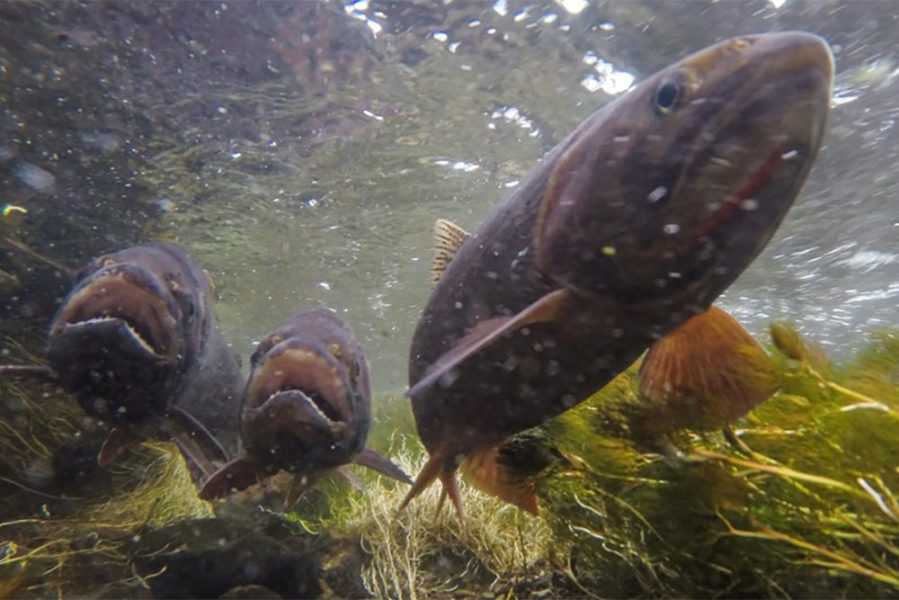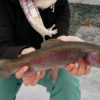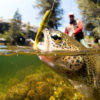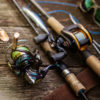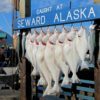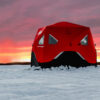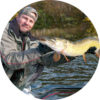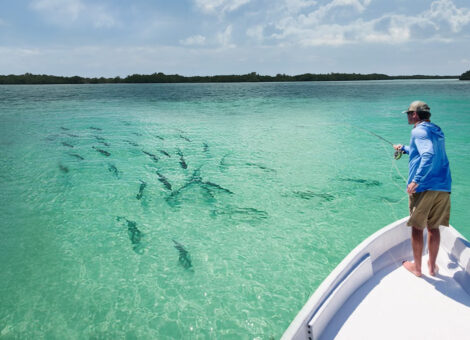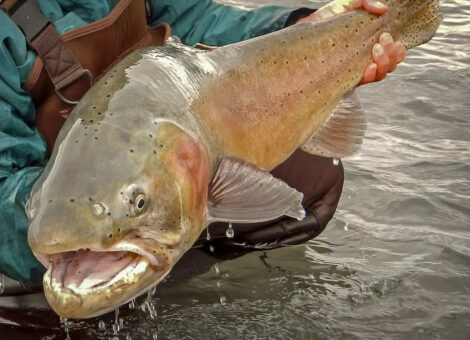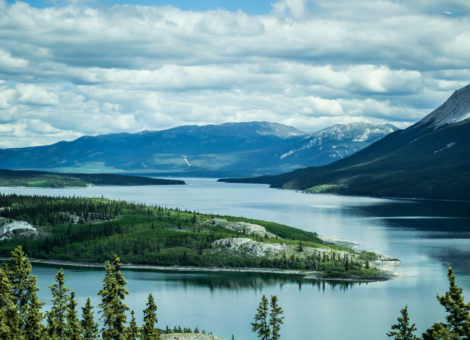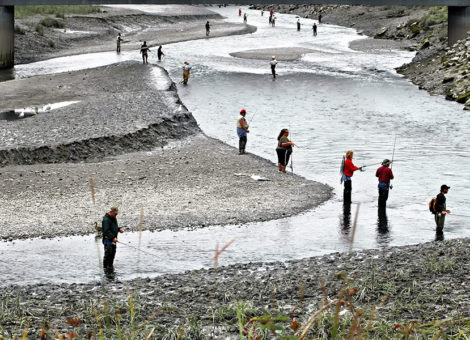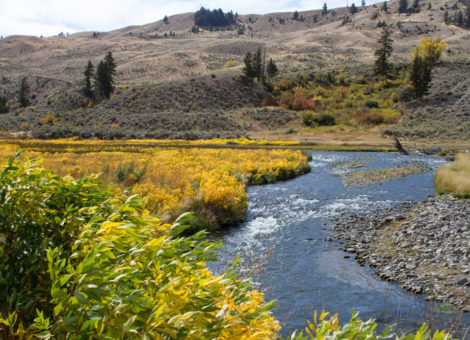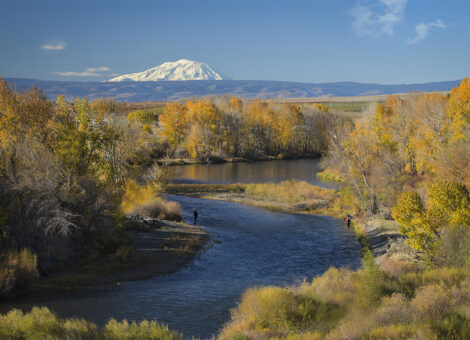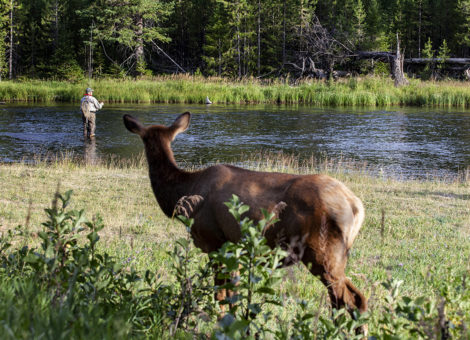Fishing in Yellowstone is a popular form of visitor recreation. Novice fisherman as well as seasoned anglers from around the world are drawn to Yellowstone to dip their line in its pristine waters and experience fishing like none other. I can personally attest, there aren’t many fisheries—or fishing experiences—quite like those you’ll find in Yellowstone Park.
Yellowstone National Park is home to 11 native species of fish and 5 nonnative species of fish—plus a hybrid subspecies. Yellowstone cutthroat trout are by far the most common native fish species in the park. Popular nonnative fish popular among anglers include giant Brown, Rainbow and Brook Trout.
Native fish species
- Arctic Grayling
- Yellowstone Cutthroat Trout
- Westslope Cutthroat Trout
- Mountain Whitefish
- Longnose Dace
- Speckled Dace
- Redside Shiner
- Utah Chub
- Longnose Sucker
- Mountain Sucker
- Utah Sucker
- Mottled Sculpin
Non-native fish species
Arctic Grayling
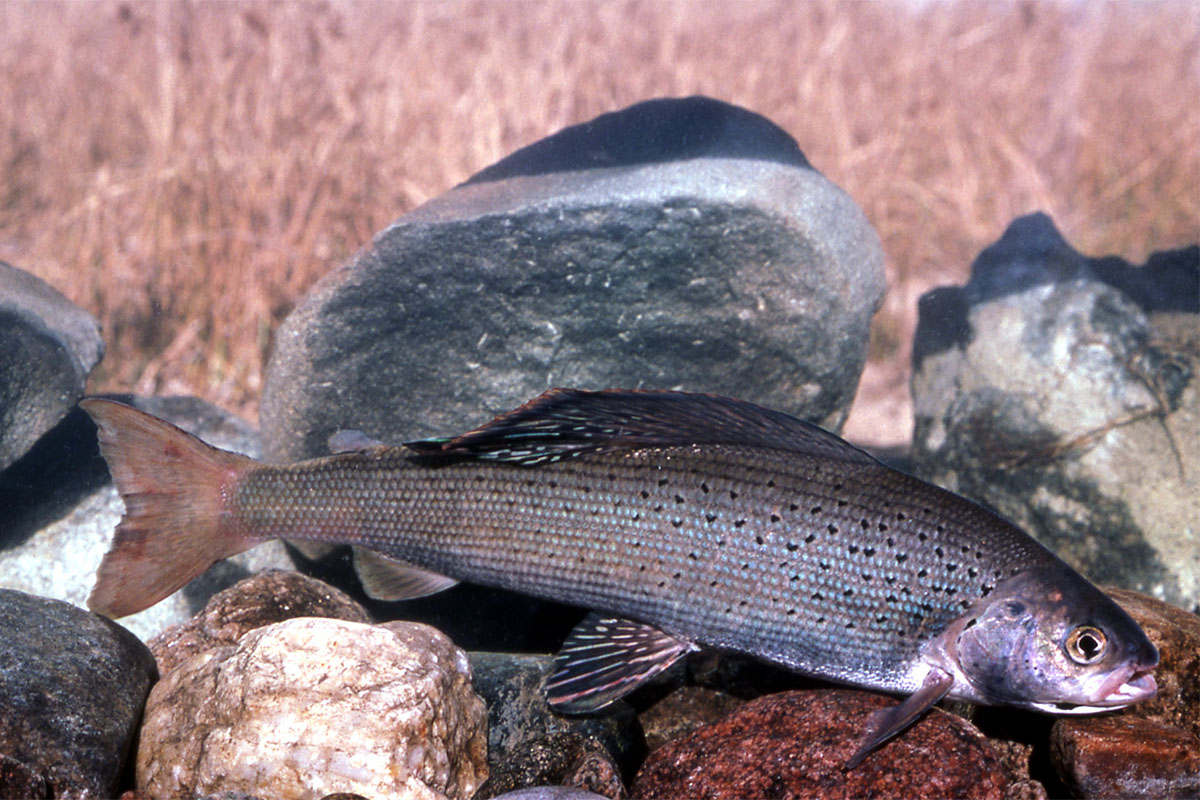
Grayling have been reintroduced throughout the park and healthy populations can now be found in Cascade Lake, Wolf Lake, Grebe Lake, Ice lakes and Gibbon River. Limited populations are found in Madison and Firehole rivers.
Diet
Arctic Grayling feed on true flies, caddisflies, macroinvertebrates, and small crustaceans.
Range
Arctic Grayling are found in Cascade, Grebe, Wolf, Ice lakes and Gibbon river. Limited populations are found Madison and Firehole rivers.
Yellowstone Cutthroat Trout
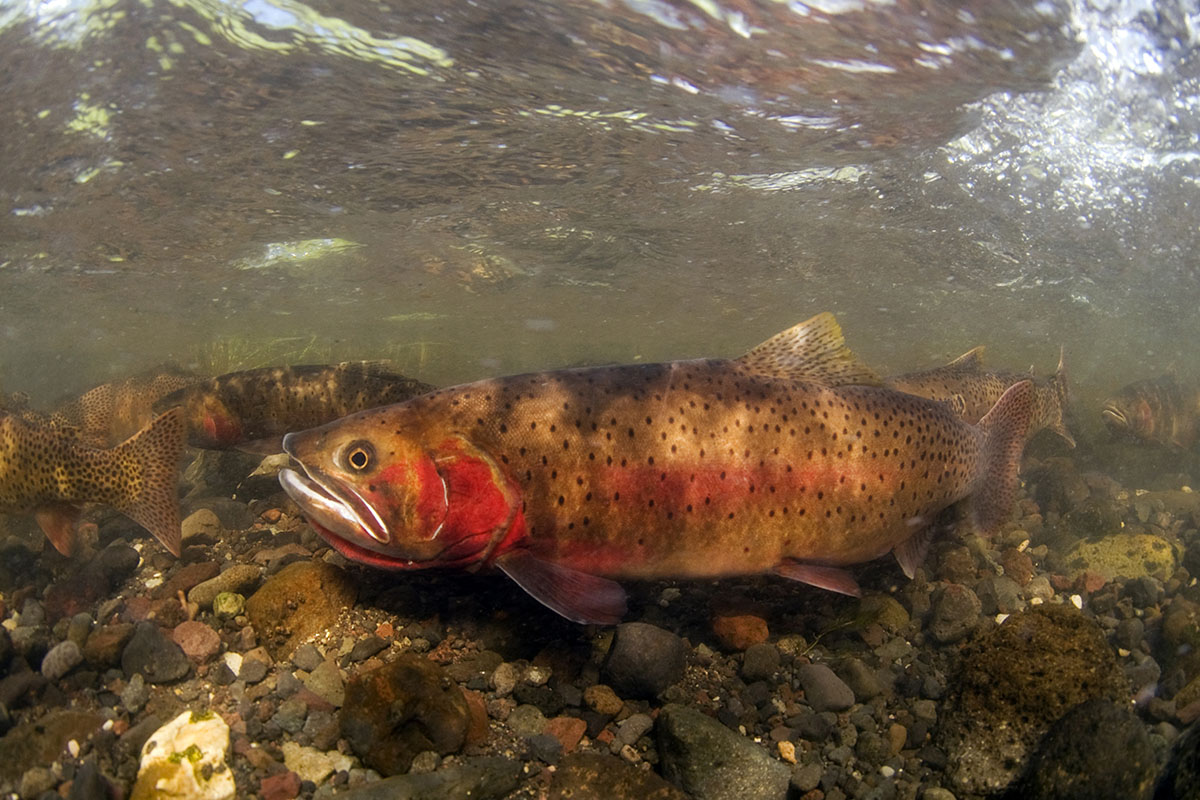
Although the Yellowstone Cutthroat trout is not listed as an endangered species, their population and distribution in Yellowstone Park have declined due to fishing pressure, hybridization, loss of habitat and predation by non-native fish species. Yellowstone Cutthroats are classified by the state and federal wildlife agencies as a “sensitive” species and are catch and release only.
Diet
Yellowstone Cutthroat feed on mayflies, stoneflies, caddisflies, small aquatic animals, as well as native insects, frogs, minnows and fish eggs.
Range
Yellowstone Cutthroat are found throughout the Yellowstone River drainage system, the Snake River, and Falls River Drainages.
Westslope Cutthroat Trout
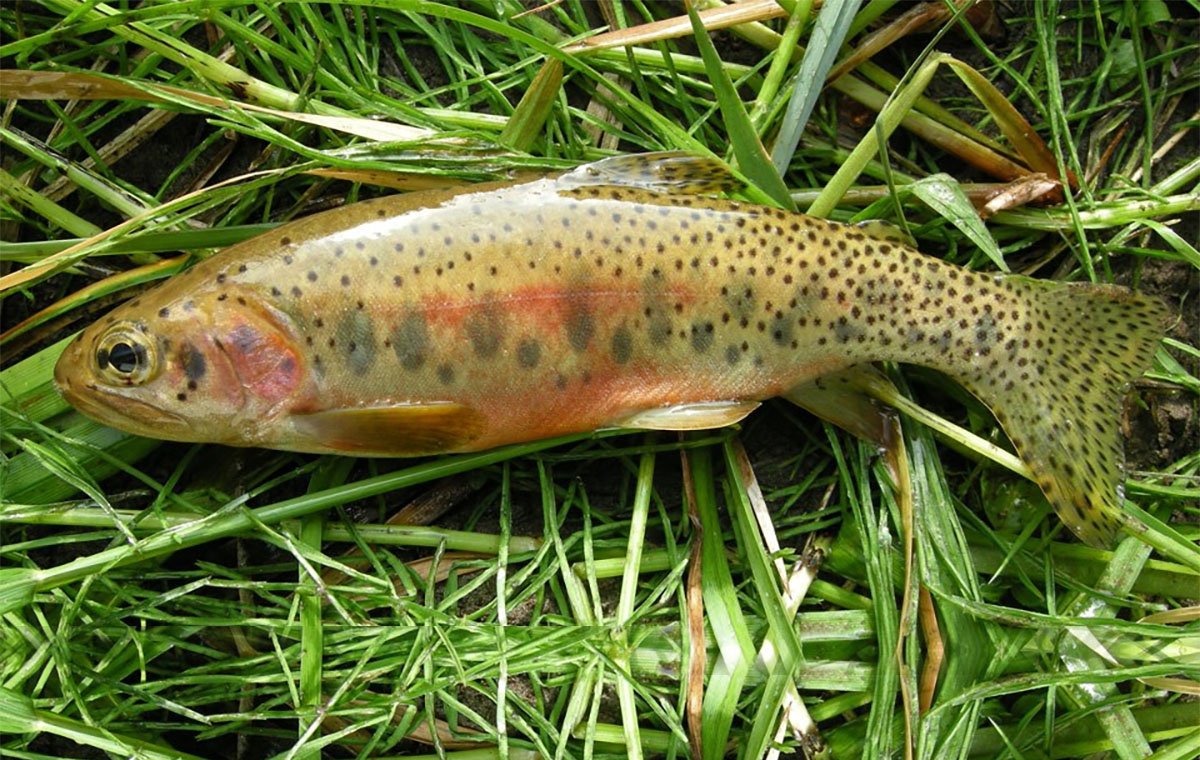
It can be challenging to the untrained eye to distinguish Westslope Cutthroats from other cutthroat species, but Westslopes often have substantially more small spots near the tail than other subspecies. They also lack spots near the pectoral fin and have unique greenish gray coloring. They are distinguishable by the presence of large, irregular spots along their sides extending toward their head. They are greenish gray or silver in color and have a crimson streak that is located just above their belly.
Diet
Westslope Cutthroat trout feed primarily on native terrestrial insects, aquatic insects and zooplankton. Westslope Cutthroat trout are smaller than Yellowstone Cutthroats and feed on smaller insects.
Range
Westslope Cutthroat trout are found in Last Chance Creek, Oxbow/Geode Creek Complex, East Fork Creek, Grayling Creek, Goose and High lakes, upper Gibbon River drainage, and Wolf and Grebe lakes region.
Mountain Whitefish
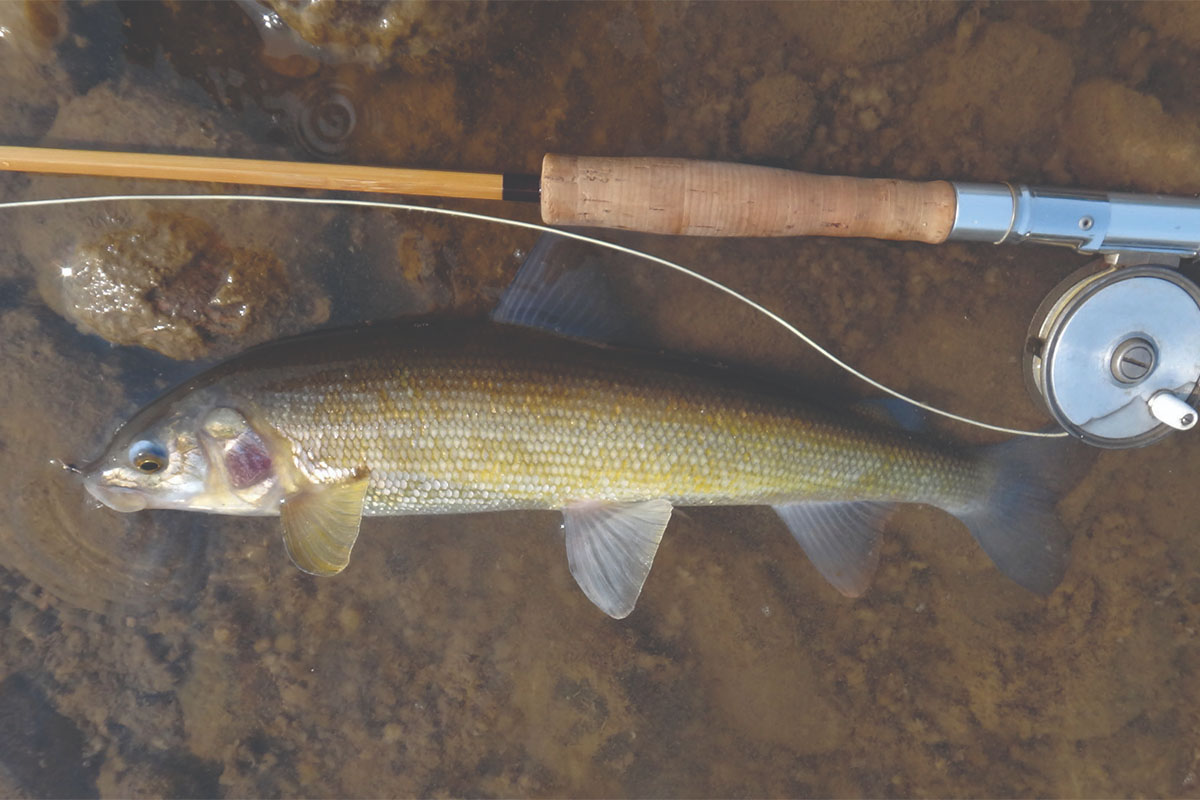
Diet
Mountain Whitefish feed on invertebrates, aquatic insects and larvae found along the bottoms of rivers. They will take bait or artificial flies—although bait fishing is prohibited in Yellowstone Park.
Range
Mountain White fish in Yellowstone Park are found primarily in Heart Lake and its tributaries. They also found in Yellowstone River (below the Lower Falls), and the Lamar, Gardiner, Madison, Gibbon, Snake, and Lewis rivers.
Longnose Dace
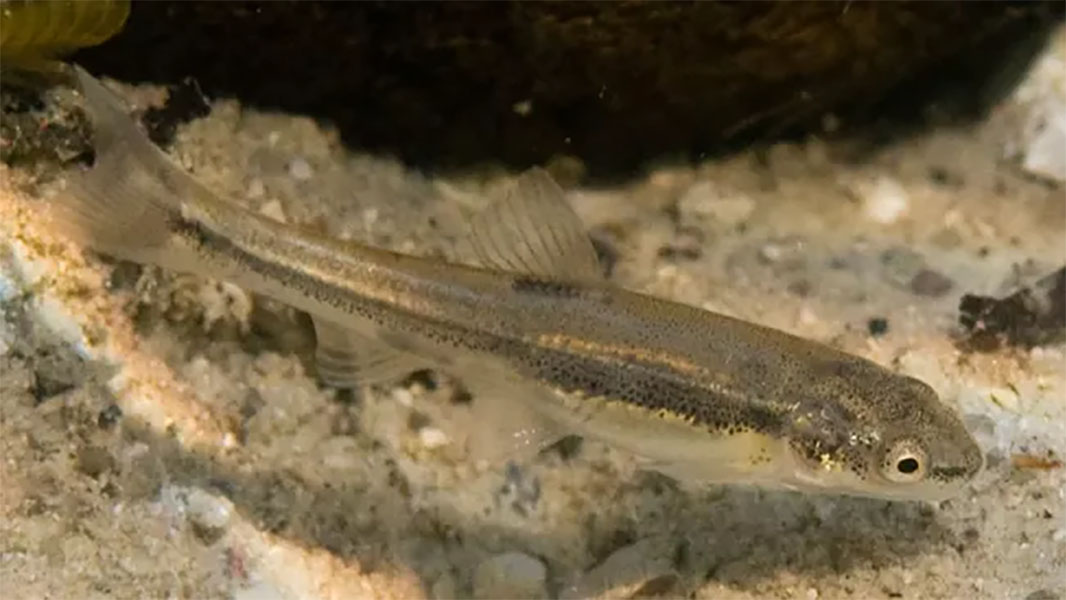
The Longnose Dace derives its name from its uncharacteristically long nose. Longose Dace grow to about 3-4 inches in length, have a sleek body, and tan coloring. They are one of the few fish in Yellowstone that are also common in murky waters.
Diet
Longnose dace feed on small aquatic insects and algae found in Yellowstone water systems.
Range
Within Yellowstone National Park, Longnose Dace are primarily found in Yellowstone and Snake river drainages, as well as Yellowstone Lake.
Speckled Dace
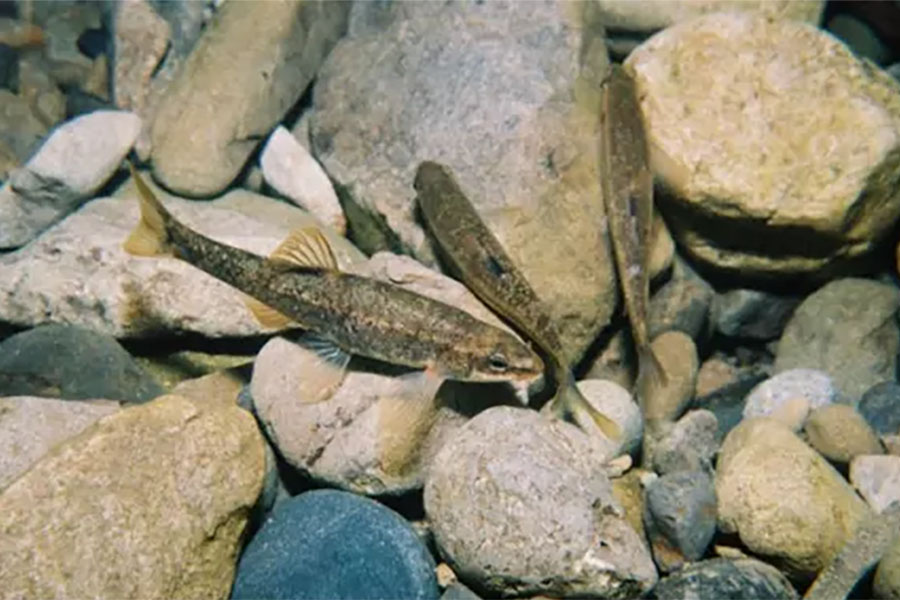
Diet
The diet of the Speckled Dace minnow includes small bottom-dwelling aquatic insects, insect larvae, zooplankton, small crustaceans and algae.
Range
The Speckled Dace is primarily found in the Snake River drainage as well as Heart Lake and Fall River drainages.
Redside Shiner
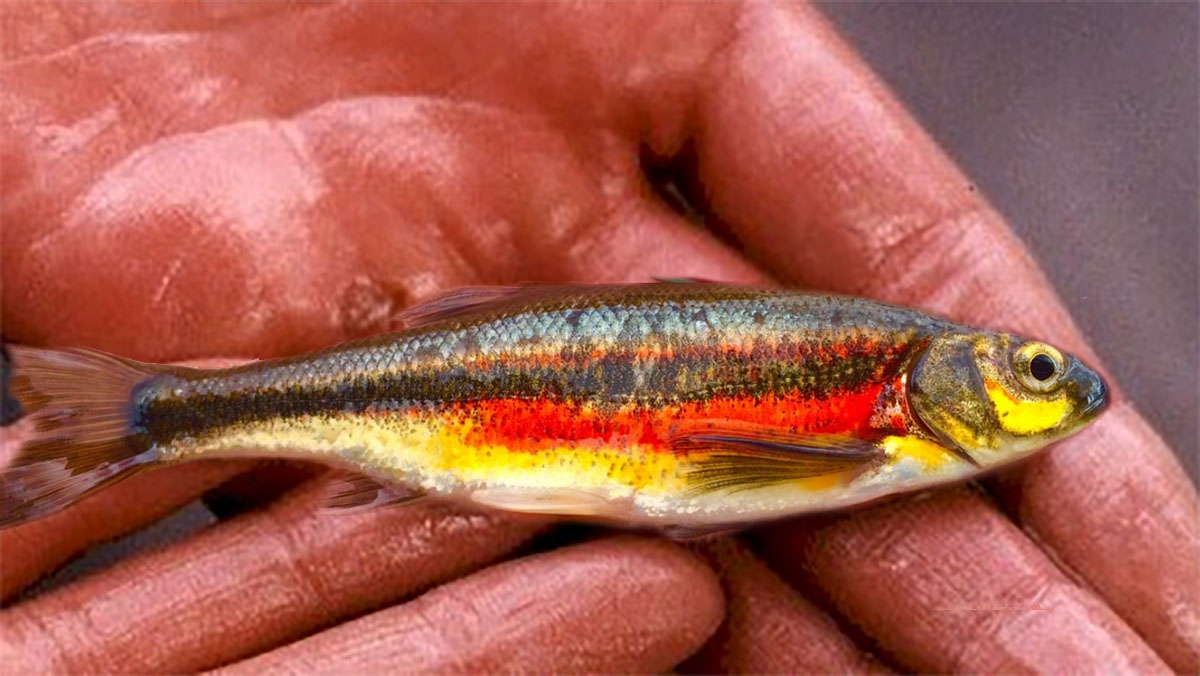
Redside Shiners grow to a maximum of 7 inches and have a life span of about 5 years. They feed on aquatic insects and serve as an important food source for larger fish including the Yellowstone Cutthroat trout.
Diet
Redside Shinner minnows feed on aquatic insects and plankton.
Range
Within Yellowstone National Park the Redside Shiner is found along the shoreline and in the tributaries of the upper Yellowstone River. It is also found in the Snake River drainage, Lewis Lake and Shoshone Lake.
Utah Chub
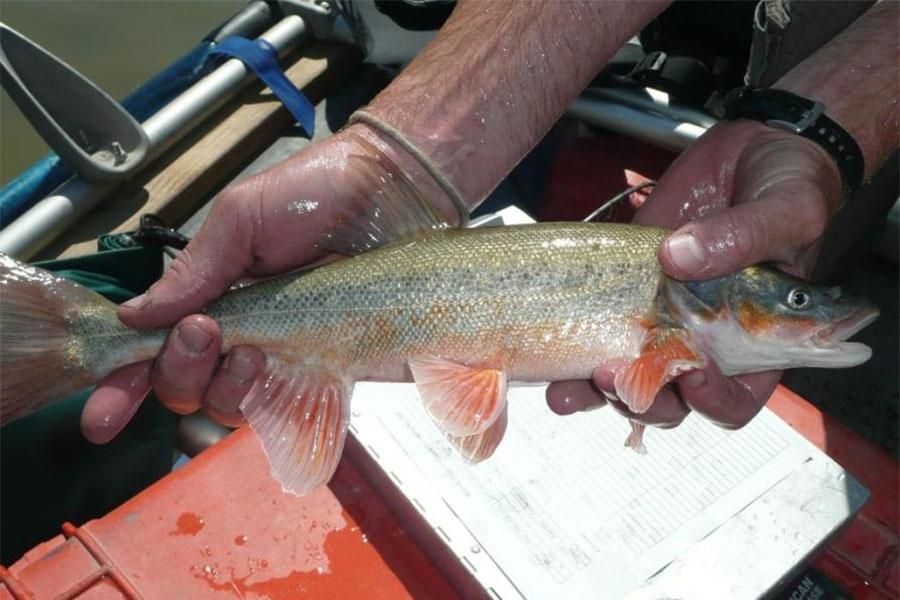
Diet
Utah Chub feed on aquatic plants and insects, as well as snails, crustaceans, fish eggs and smaller minnows.
Range
Found throughout Yellowstone’s Snake River drainage system with the largest populations found in Lewis, Shoshone and Heart Lakes.
Longnose Sucker
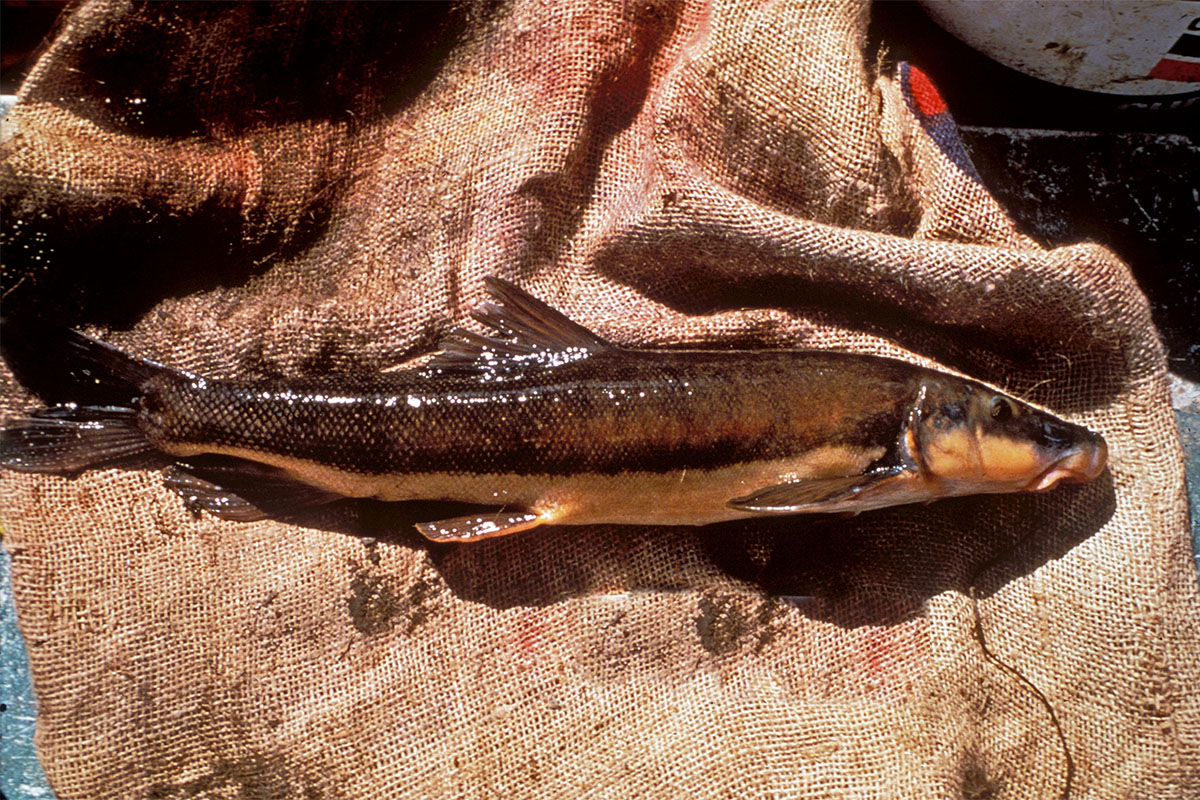
These fish are an important part of the Yellowstone ecosystem and serve as food source for other fish including Yellow cutthroat, Brown and Rainbow Trout.
Diet
Longnose Sucker feed on aquatic plants, algae, insects and small invertebrates found on the bottom of cold water creeks, rivers and lakes.
Range
Longnose Sucker were originally found in Lamar River, Gardner River and Slough Creek. They’ve recently been introduced into Yellowstone Lake and their range has expanded into the upper tributaries of Yellowstone Park.
Mountain Sucker
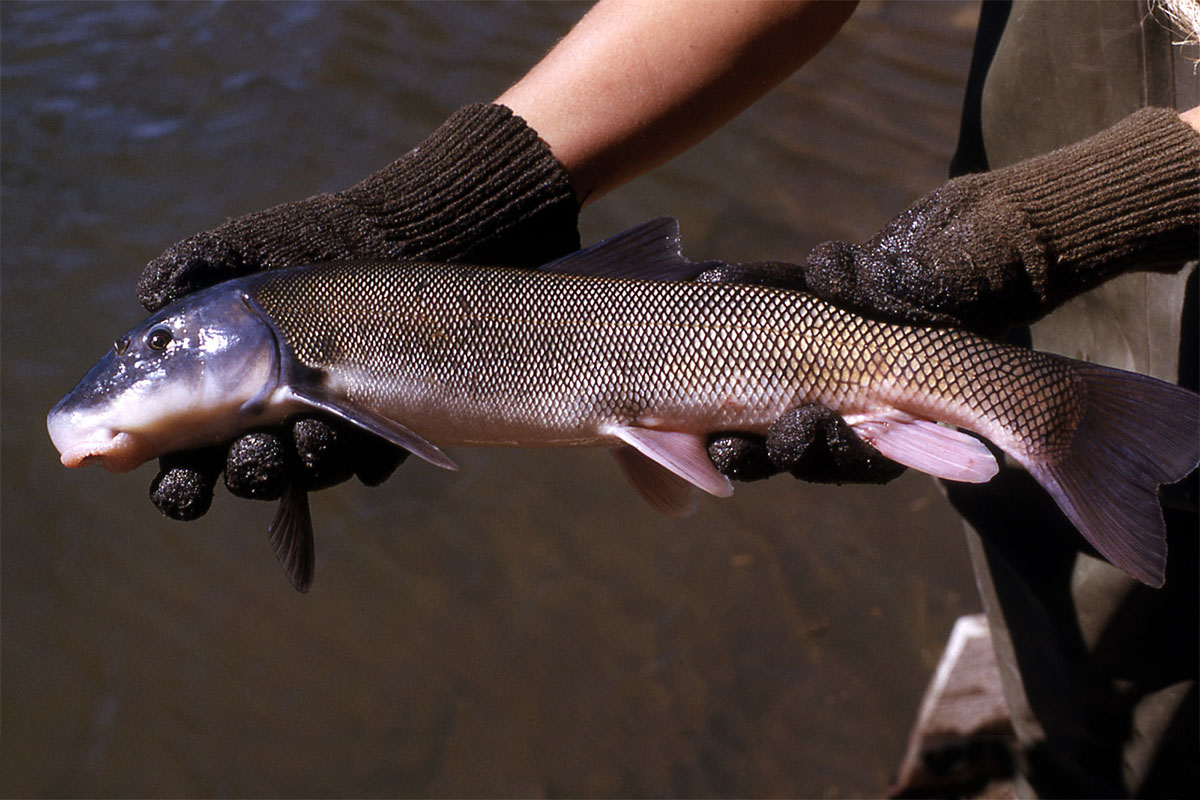
The Mountain Sucker is typically green to dark green in color along its back and upper sides, and white along its belly. It may have mottling shaped saddles along its back. During the breeding season Mountain Suckers develop an orange to red color band along their sides. They can reach up to 9 inches in length, but rarely exceed 6 inches.
Diet
Like other sucker fish native to Yellowstone, the Mountain Sucker feeds primarily on algae, aquatic plants and invertebrates it finds along bottom of the water column.
Range
Mountain Sucker fish are found in cold, clear streams throughout the Yellowstone drainage. They are often found in the waters directly below Yellowstones major waterfalls.
Utah Sucker
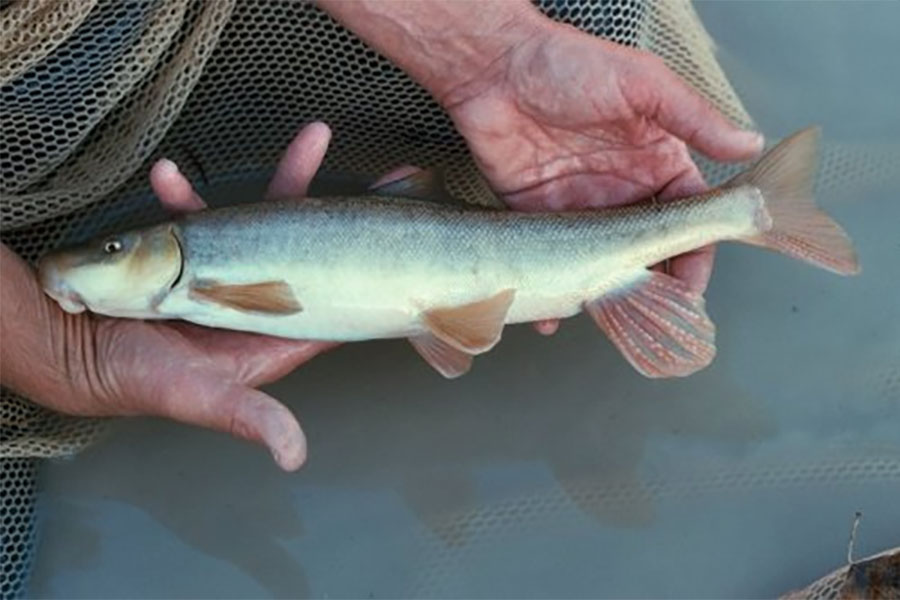
Utah Suckers typically are dark brown or black along there backs and sides with a white underbelly. They often have a faint pattern of blotches or spots along there upper sides and back. They have a noticable rosy band extending from the rear of their head. The mouth is found on the underside of the head and has the thick lips characteristic of sucker fish. They have an elongated anal fin that is placed well back.
Habitat of the Utah Sucker includes streams, rivers and lakes in seasonally warm to cold water. They tend to prefer water flowing over sand, silt or gravel substrait. They’re often found near vegetation or rocks where they can flee to escape predation.
Diet
The Utah Sucker feeds on aquatic plants and invertebrates found along the bottom of the waterways withing its range. As a larger sucker species, they will also take flies, lures and a variety of baits including worms. (Note: fishing with both organic and non-organic baits is prohibited in Yellowstone Park.)
Range
The Utah Sucker is found in Heart Lake, the Heart Lake drainage and the Snake River drainage system.
Mottled Sculpin
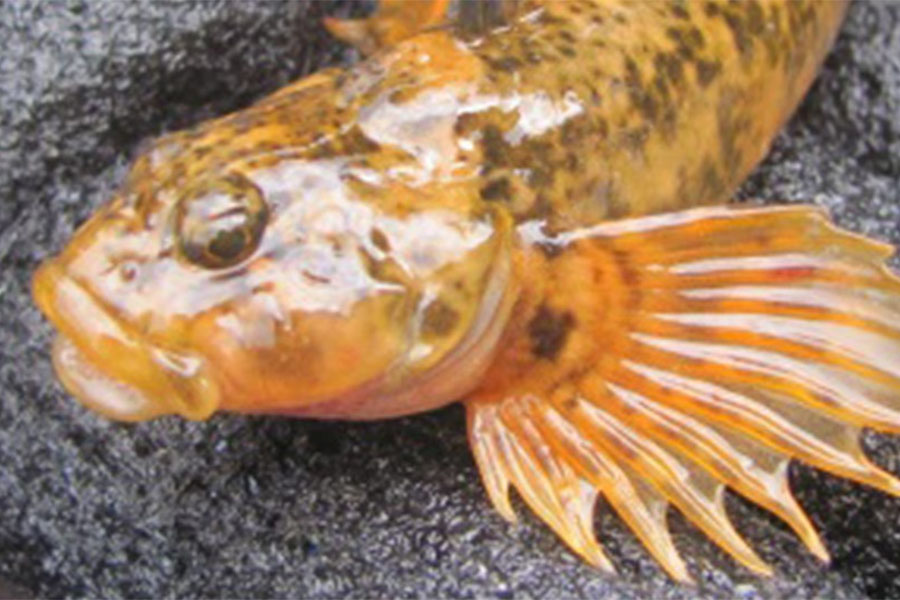
The sculpin is tan to brown in coloration and has a mottled pattern of speckles and spots covering its body. It has a large banded pectoral fin and a slender dorsal fin made of soft spines.
The Mottle Sculpin is an important part of the Yellowstone ecosystem and often serves as a food source for larger fish including Brook and Brown trout.
Diet
Mottled Sculpin feed on small bottom-dwelling aquatic insects, larvae, invertebrates, crustaceans and fish eggs.
Range
The Mottled Sculpin is distributed throughout Yellowstone Park. It can be found in clear streams, rivers and lakes, and prefers shallow, cold rocky waterways. Mottled Sculpin are native to the Yellowstone drainage and also inhabit Fall River, Snake River, Yellowstone River, Shoshone River and Gallatin River drainages.
Brook Trout
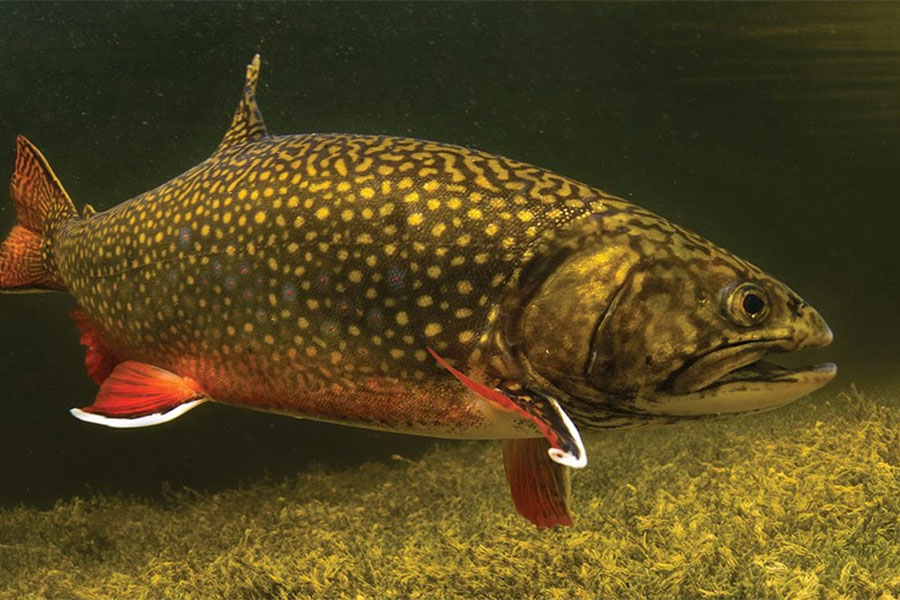
Brook trout were the first non-native fish species introduced to Yellowstone Park. In 1889, the then fishless Firehole River was the first body of water to be stocked with Brook trout. Today Brook trout are found throughout Yellowstones waterways, rivers, streams and lakes. The prefer clear, highly-oxygenated water and are sensitive to pollution.
Even though Brook trout are a popular sport fish for anglers, they’re considered an invasive species and certain measures have been taken to remove them from regions of Yellowstone Park. Biologists have used electrofishing to eradicate Brook trout from Soda Butte Creek and Lamar drainage to allow native Yellow cutthroat species to flourish.
Diet
Brook trout have a diet very similar to other trout. They each aquatic insects (caddisflies, mayflies, stoneflies and dipeterasns), native terrestrial insects (cricket, grasshoppers, ants), larvae, frogs, smaller fish and fish eggs. Artificial lures including rooster tails, jigs, spoons, spinners, swimbaits and flies are effective for catching Yellowstone Brook trout.
Range
Brook trout populations are found primarily above Kepler Cascades in Firehole River and Firehole tributaries including Little Firehole River, Sentinel and Iron Spring creeks. Above Osprey Falls in Gardner River drainage, Middle Creek drainage of Shoshone River and Shoshone Lake Brook trout are also plentiful.
Brown Trout
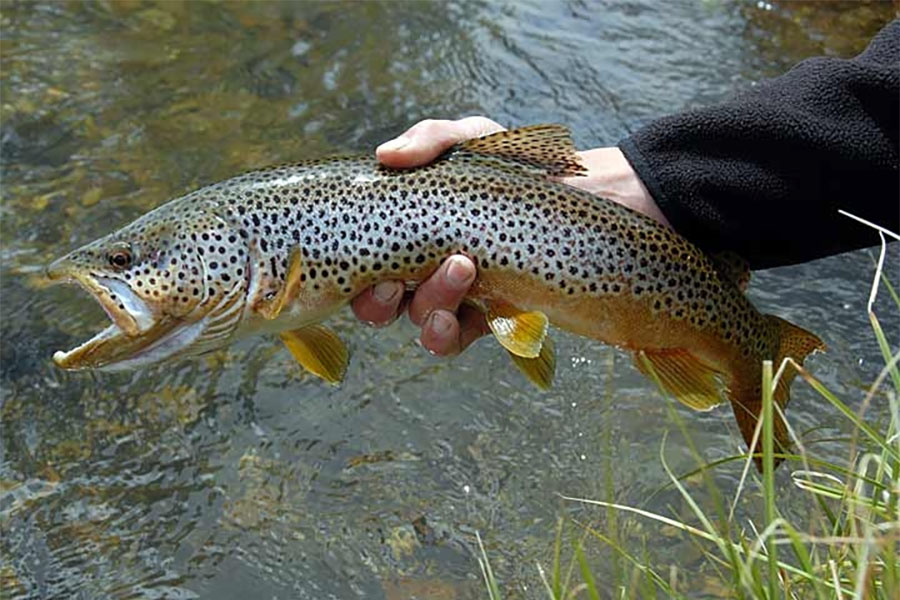
Brown trout are the primary fish species in the Madison River. Each year there are large runs of spawning Brown trout from Hebgen Lake outside the park to Yellowstone’s Madison river. These runs of Brown trout are extremely popular among anglers.
Although a popular game fish among anglers, the Brown trout is considered an invasive species to Yellowstone. Native cutthroat trout and Arctic grayling have declined in numbers over the years in both the Madison and Gallatin rivers due to predation and competition from Brown trout.
Brown trout are tan to yellowish in color with speckled spots along their upper sides and back. They typically have a yellow-colored belly. Their back, dorsal an adipose fins have a marbled appearance. Their lower fins are white tipped. Brown trout average beween 7 to 14 inches, but can reach over twenty inches. Large brown trout can weigh in at 15 to 20 lbs.
Diet
Brown trout in Yellowstone Park feed on native insects (terrestrial and aquatic), crustaceans, crayfish, smaller fish, frogs and mollusks. They’ve also been known to eat birds and mice that venture too close to the water. Brown trout will also take artificial lures and flies.
Range
Brown trout can be found throughout Yellowstone Park rivers and drainages. They occur in Firehole River, Madison River, Gibbon River, Yellowstone River below Knowles Falls, Gardner River below Osprey Falls, Middle Creek, and Shoshone and Gallatin River tributaries. Brown trout are absent from Fall River and Bechler River drainages in the southwest region of Yellowstone.
Lake Trout
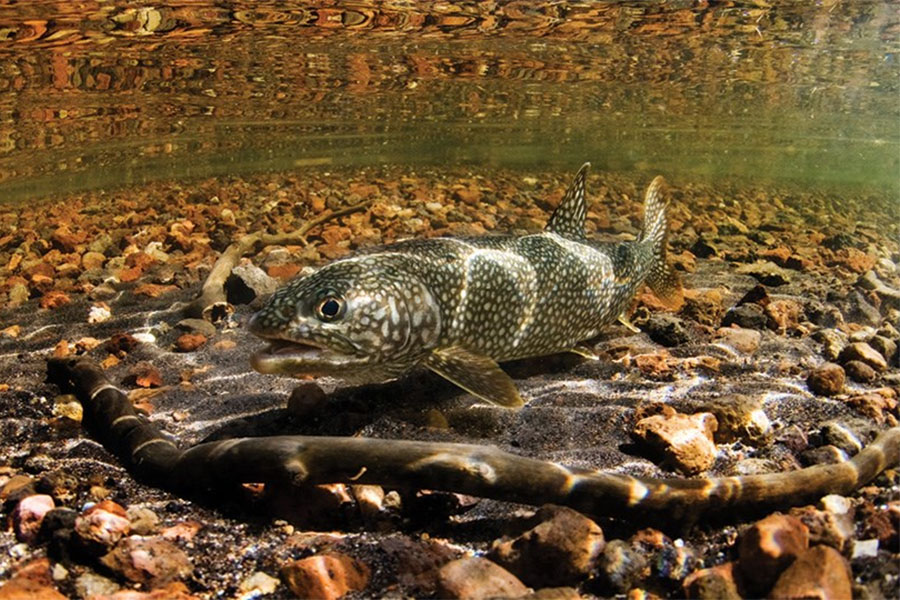
An average adult Lake trout will range between 24-36 inches and weight between 15-40 lbs—substantially larger than the average cutthroat. In order to lessen the impact of Lake trout on native cutthroat populations, efforts continue to reduce the number of Lake trout in Yellowstone Lake. Anglers are required to harvest any Lake trout they catch, and it is illegal to release live Lake trout back into Yellowstone lake or its tributaries. As Lake trout populations decline, cutthroat populations rebound.
Diet
Lake trout are predatory fish. About 30% of their diet consists of cutthroat trout. They are voracious feeders and can consume a fish half their size. Anglers can catch Lake trout using a variety of artificial lures, spoons, spinners and flies.
Range
Within Yellowstone National Park, Lake trout are found primarily in Lewis, Heart, Shoshone and Yellowstone lakes. There have been continued efforts to reduce the population of Lake trout in Yellowstone lake in order to improve native fish populations.
Lake Chub
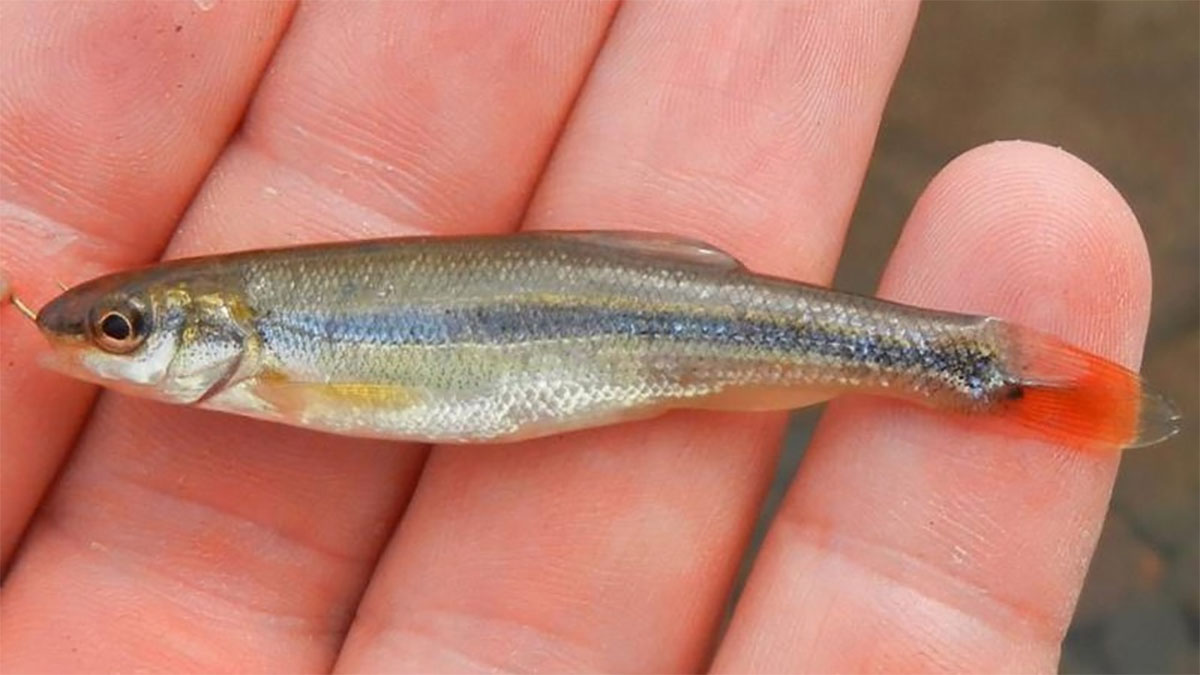
Lake Chub are often found in cold water lakes and streams. They are also found in rivers, but prefer smaller creeks. Within Yellowstone Park, Lake Chub are found in Slough Creek.
Lake Chub average between 4 and 7 inches in length and are silvery to blueish gray/brown in color. They have a distinct barbel located above each corner of the mouth.
Diet
The diet of Lake Chub consists of aquatic insects, insect larvae, native terrestrial insects, and algae. Lake CHUB will occassionally feed on smaller minnows. Larger fish, including cutthroat trout, will feed on Lake chub when the opportunity is presented.
Range
Withing Yellowstone Park, Lake Chub are found primarily in the Slough Creek drainage. They are also found in Yellowstone Lake to a lesser degree.
Rainbow Trout
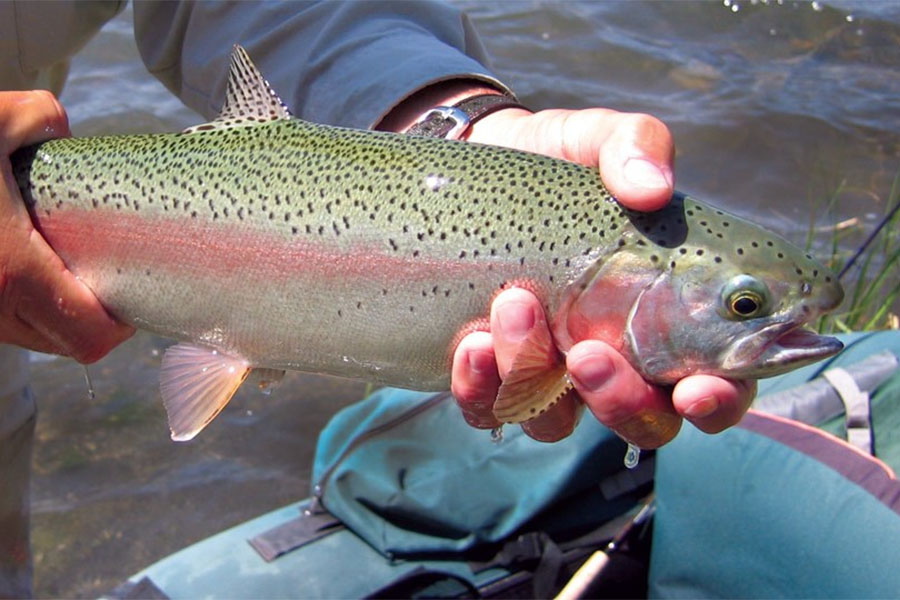
Diet
Rainbow trout feed on a variety of aquatic insects, native terrestial insects, crustaceans, small minnows, mollusks and worms. Rainbows will take a variety of artifical lures and flys. Fly fishing is the most common technique for catching Rainbows in Yellowstone National Park.
Range
Rainbow trout are found throughout Yellowstone Park waters due to historic stocking of the fish. However, they are not found in Yellowstone Lake, Yellowstone River (above the Upper Falls) or the Snake River. There are substantial populations of Rainbow trout below Yellowstone Falls, in upper Slough Creek, Firehole River, Lamar River and Gibbon River.
Rainbow-Cutthroat Trout Hybrids
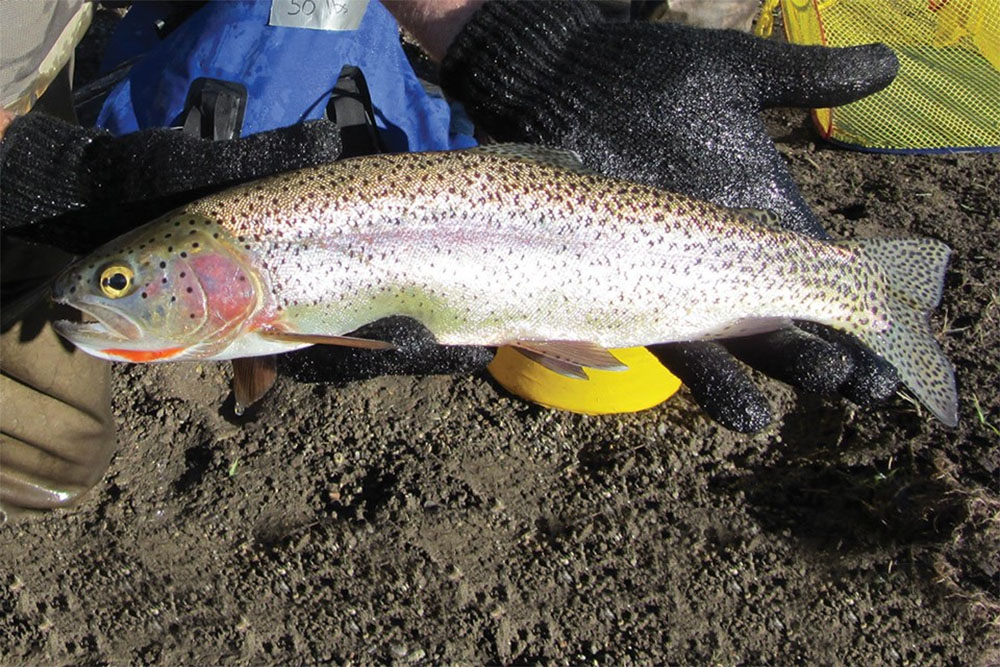
Cutbows share many of the characteristics of both Rainbow and Cutthroat trout. Rainbow-Cutthroat hybrids lack the yellow color of the Cutthroat trout and have sides similar in color and pattern to those of a Rainbow trout. A red slash in the lower part of the gill clearly distinguishes the Cutbow from either the Cuttroat or Rainbow trout.
Cutbows have the spirit of Rainbow trout and tend to put up a bit of a fight when they’re hooked.
Diet
Cutbows have a diet similar to that of both Rainbow and Cutthroat trout. Cutbows feed on aquatic insects, terrestial insects, small minnows, snails and crustaceans.
Range
Rainbow-Cutthroat hybrids may occur anywhere where both Rainbow and Cutthroat trout are present. Populations of Cutbows exist in the Bechler, Gallatin, Gardner, Falls, Slough Creek and Lamar river drainages, as well as Yellowstone River below the Upper Falls.


